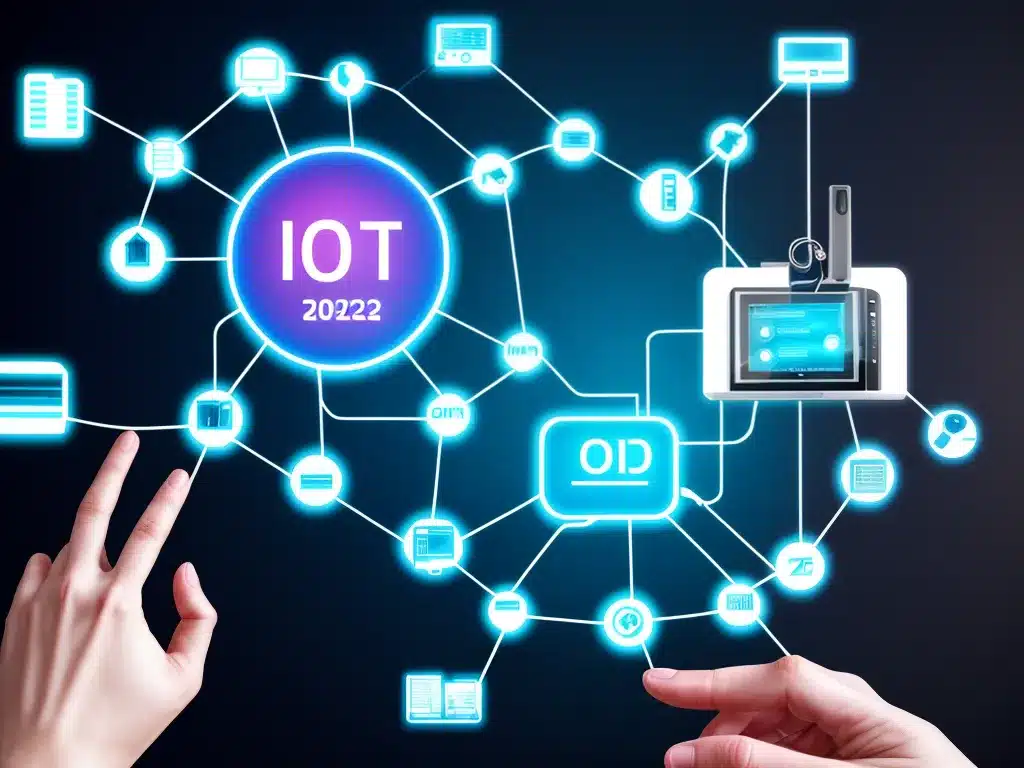
The Internet of Things (IoT) is transforming how we live and work through the proliferation of connected devices and the data they generate. As we enter 2024, IoT is expected to continue spreading into new areas and having an even bigger impact. Here are my top 10 predictions for where IoT is headed in 2024:
1. Growth in Enterprise IoT Implementations
By 2024, IoT deployments in the enterprise will become mainstream as companies realize the benefits of connecting assets, processes and people. According to IDC, enterprise IoT spending will reach $362 billion by 2025, more than double the $178 billion spent in 2020. Companies will implement IoT solutions for predictive maintenance, asset tracking, fleet management, smart warehouses and more. The key to success will be data integration and analytics to extract value from IoT data.
2. Expansion of Smart Cities
Smart city initiatives will gain huge momentum through 2024. Cities will adopt IoT technologies like connected sensors, CCTV cameras, data analytics and more to optimize city operations and infrastructure. Smart city applications will include smart parking, traffic management, water leak detection, air quality monitoring and more, improving urban life for citizens. According to IDC, smart city spending will reach $124 billion globally in 2024.
3. Growth of Industrial IoT
The Industrial Internet of Things (IIoT) will drive considerable transformation across manufacturing, energy, transportation and other industrial sectors. IDC predicts there will be 55.7 billion IIoT connections globally by 2025, up from 27.4 billion in 2021. Companies will implement IIoT solutions for functions like predictive maintenance, asset tracking, fleet management, smart factories and more. 5G will accelerate IIoT growth.
4. Advancements in Healthcare IoT
IoT adoption in healthcare will continue rising to transform patient care and improve medical operations. According to Deloitte, global IoT healthcare spending will reach nearly $160 billion by 2024. Key applications include remote patient monitoring, telemedicine, wearable fitness trackers, and connected imaging devices that enrich health data. Hospitals will leverage IoT data analytics to boost productivity.
5. Growth of Smart Homes and Buildings
The smart home market will keep expanding as home automation becomes more mainstream. There will be over 1.39 billion smart home devices in use globally by 2024 according to Statista. Voice assistants like Alexa and Google Home will drive smart home adoption. Connected security systems, smart appliances, lighting and climate controls will become commonplace.
6. Development of Smart Infrastructure
Cities will deploy smart infrastructure leveraging IoT sensors and connectivity to optimize systems like power grids, water supplies and waste management. This infrastructure will generate crucial data to better manage resources. For example, a smart power grid can self-monitor energy usage, make autonomous adjustments and enable two-way communication between utilities and appliances in homes and buildings.
7. Expansion of High-Speed Networks
5G networks and low power wide area networks (LPWAN) like LoRa and NB-IoT will continue development, providing the critical wireless connectivity required for the massive growth in IoT devices. IDC predicts there will be 41.6 billion connected IoT devices generating 79.4 zettabytes (ZB) of data by 2025. High-speed, low latency networks will be essential to handle this data deluge.
8. Evolution of IoT Platforms and Solutions
The market for IoT platforms and end-to-end solutions will keep evolving as vendors integrate insights from early deployments. Platforms will need to securely manage connectivity, protocol support, device management, data analytics and integration with enterprise systems and cloud services. Companies like SAP, AWS and PTC offer platforms today, but new entrants will arrive by 2024.
9. Continued IoT Security Challenges
IoT security will remain a major concern as the exponential increase in connected devices provides more attack surfaces for hackers. IoT ecosystems have many vulnerable points across sensors, connectivity, platforms, cloud and networks. Security must be a priority, driving measures like encryption, access controls, data protection, device management and regular patching. Advanced IoT security platforms will emerge to protect entire ecosystems.
10. Development of IoT Standards and Regulations
As IoT advances into critical industries like healthcare and transportation, standards and regulations will grow in importance to ensure quality, security and interoperability. Groups like IEEE, ISO and IETF are already developing standards for areas like wireless connectivity, architectures and communication protocols. Meanwhile governments are looking to regulate IoT, especially regarding privacy and security, to protect consumers using smart home and wearable products.
In summary, IoT adoption will accelerate in the coming years as costs drop and benefits become clearer across industries. To fully leverage IoT, companies must unify devices, connectivity, data analytics and security into comprehensive platforms. Overall, IoT will be a transformative technology that changes how we live and work through the next decade and beyond. The future is bright for the Internet of Things.












